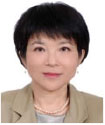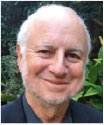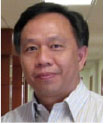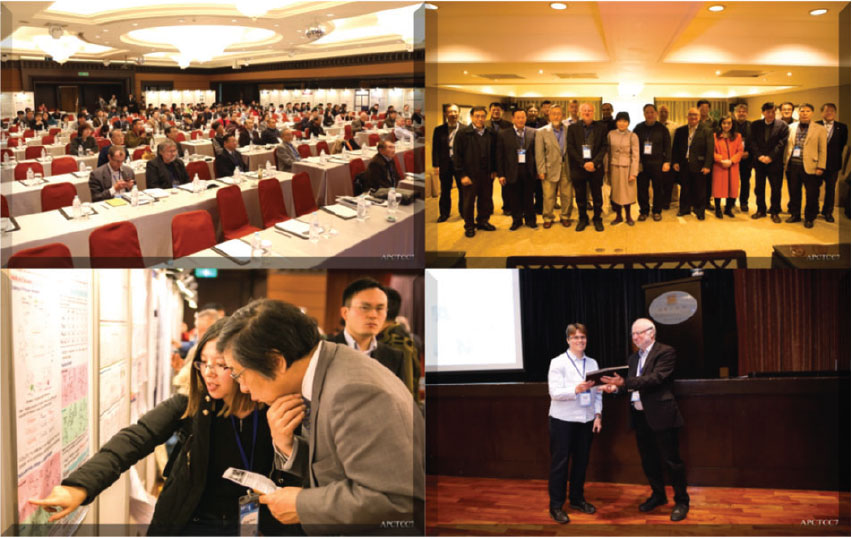Seventh Asia-Pacific Conference of Theoretical and Computational Chemistry (APCTCC7)
Chin-Hui Yu A , Leo Radom B and Ming Wah Wong C DA Department of Chemistry, National Tsing Hua University, No. 101, Section 2, Kuang-Fu Road, Hsinchu 30013, Taiwan.
B School of Chemistry, University of Sydney, Sydney, NSW 2006, Australia.
C Department of Chemistry, National University of Singapore, 3 Science Drive 3, Singapore 117543, Republic of Singapore.
D Corresponding author. Email: chmwmw@nus.edu.sg

Chin-Hui Yu is Professor of the Department of Chemistry at National Tsing Hua University. She received her Ph.D. degree in 1987 from Ohio State University. Following graduate work, she moved to the University of Houston as a post-doctoral fellow. She joined the faculty of National Tsing Hua University in 1990 as an associate professor and became a professor in 1998. She is a member of the editorial board of J. Theor. Comput. Chem. as well as a scientific board member of APATCC. Dr Yu chaired the seventh Asia-Pacific Conference of Theoretical and Computational Chemistry (APCTCC7). |

Leo Radom is Emeritus Professor of Chemistry at the University of Sydney. He is the current President of the Asia-Pacific Association of Theoretical and Computational Chemists and the Australian Association of Theoretical and Computational Chemists, and the immediate Past President of the World Association of Theoretical and Computational Chemists. He has been elected to the International Academy of Quantum Molecular Science, and is a Fellow of the Australian Academy of Science and the Royal Society of New South Wales. |

(Richard) Ming Wah Wong is Head and Professor of the Department of Chemistry at the National University of Singapore (NUS). He received his Ph.D. degree from the Australian National University in 1989, and held post-doctoral positions subsequently at IBM Kingston and Yale University. He held an Australian Research Fellowship at the University of Queensland for five years before joining NUS in 1997. Dr Wong is the author and co-author of about 200 scientific publications, with more than 8600 citations. Currently, he is on the international advisory board of the Asian Journal of Organic Chemistry and Associate Editor of the Australian Journal of Chemistry. |
Australian Journal of Chemistry 69(9) 931-932 https://doi.org/10.1071/CHv69n9_FO
Published: 5 September 2016
The Asia-Pacific Association of Theoretical and Computational Chemists (APATCC) was founded in 2004 with the aim of encouraging the development of theoretical and computational chemistry in the Asia-Pacific region. One of the mechanisms for doing this has been to hold a series of Asia-Pacific Conferences of Theoretical and Computational Chemistry in order to showcase research that is being carried out in this field in the region. The first of these conferences was held in 2004 in Okazaki, Japan (APCTCC1), and this was followed by conferences in 2005 in Bangkok, Thailand (APCTCC2), in 2007 in Beijing, China (APCTCC3), in 2009 in Port Dickson, Malaysia (APCTCC4), in 2011 in Rotorua, New Zealand (APCTCC5), and in 2013 in Gyeongju, Korea (APCTCC6).
The most recent APCTCC conference was held from 25 to 28 January 2016 in Kaohsiung, Taiwan (APCTCC7). The conference attracted 206 participants from 16 countries, as follows: 81 from Taiwan, 48 from Japan, 32 from China, 11 from the Republic of Korea, eight from Australia, five from India, five from the Philippines, five from Thailand, two from New Zealand, two from Singapore, two from Sri Lanka, one from Hong Kong, one from Kazakhstan, and three guests from Europe (Fig. 1). The program included five award lectures, 75 invited lectures, 23 contributed orals, 16 student orals, and 54 posters.
This special issue of the Australian Journal of Chemistry includes contributions from participants in APCTCC7, and provides a sample of the research that is being undertaken in theoretical and computational chemistry in the Asia-Pacific region. A broad range of fundamental and applied topics in chemistry, biochemistry, and materials science has been covered, which reflects the diverse assortment of topics presented at the APCTCC7 meeting. In materials research, Chai et al. (National Taiwan University) discuss the electronic and optical properties of the narrowest armchair graphene nanoribbon, modelled by a series of planar poly(p-polyphene) oligomers.[1] Their calculated results are in excellent agreement with experiment results. Lein et al. (Victoria University of Wellington, New Zealand) report DFT calculations of Cu, Ag, and Au cation intercalation into novel paracyclophane molecules.[2] The authors find that the metal ions coordinate at the periphery of the paracyclophane structure and they provide reasons for the peripheral binding mode. In biochemistry research, Coote et al. (Australian National University) report a mechanistic investigation of oxidative cleavage of cholesterol using a spin-projected DFT method and they propose a theozyme model involving dual molecular oxygen oxidation activation and sulfide reduction.[3] Saito et al. (University of Tokyo, Japan) report theoretical analyses on a proton-transfer pathway for a photo system II from tyrosine D to bulk water by means of a QM/MM approach.[4] The authors show that the proton transfer occurs on a downhill potential energy landscape. Using molecular docking and molecular dynamics, Weerasinghe et al. (University of Colombo, Sri Lanka) and co-worker Udawatte (Institute of Chemistry Ceylon, Sri Lanka) investigate the potential of coumarin-derived inhibitors as lead compounds for human DNA topoisomerase I.[5] In catalysis research, Karton et al. (University of Western Australia) report a detailed mechanistic study on the role of water in the formation of levoglucosenone from anhydrosugar intermediates, an important process in biomass conversion.[6] Wong et al. (National University of Singapore) examine the catalytic mechanism of pentanidium‐catalyzed asymmetric phase‐transfer conjugate addition.[7] The origin of stereoselectivity is unravelled in their DFT study. Finally, three papers on theoretical method development are highlighted in this special issue. Chou (National Tsing Hua University, Taiwan) and Li (National Taiwan University) apply the asymptotic functional form preservation method in the framework of supersymmetric quantum mechanics for anharmonic oscillators.[8] Their excellent computational results suggest that the proposed method is suitable for solving similar quantum mechanical problems. Gadre et al. (Indian Institute of Technology-Kanpur, India) investigate a new method of defining ‘atoms in molecules’ based on molecular electrostatic potentials. The authors also establish a strong link between NMR shielding effects and reactivity.[9] Sim et al. (Yonsei University, South Korea) propose a new computational approach, based on molecular dynamics simulations, to predict electron delocalization and, hence, aromaticity in extended cyclic conjugated systems.[10] We trust that readers will find these diverse contributions beneficial and inspirational when searching for new big ideas in their research.
References
[1] C.-N. Yeh, P.-Y. Lee, J.-D. Chai, Aust. J. Chem. 2016, 69, 960.| Crossref | GoogleScholarGoogle Scholar |
[2] Z. X. Wong, M. Lein, Aust. J. Chem. 2016, 69, 969.
| Crossref | GoogleScholarGoogle Scholar |
[3] R. Lee, M. L. Coote, Aust. J. Chem. 2016, 69, 933.
| Crossref | GoogleScholarGoogle Scholar |
[4] K. Saito, N. Sakashita, H. Ishikita, Aust. J. Chem. 2016, 69, 991.
| Crossref | GoogleScholarGoogle Scholar |
[5] M. G. Guruge, C. Udawatte, S. Weerasinghe, Aust. J. Chem. 2016, 69, 1005.
| Crossref | GoogleScholarGoogle Scholar |
[6] W. Wan, L.-J. Yu, A. Karton, Aust. J. Chem. 2016, 69, 943.
| Crossref | GoogleScholarGoogle Scholar |
[7] C. W. Kee, M. W. Wong, Aust. J. Chem. 2016, 69, 983.
| Crossref | GoogleScholarGoogle Scholar |
[8] C.-C. Chou, C.-T. Li, Aust. J. Chem. 2016, 69, 950.
| Crossref | GoogleScholarGoogle Scholar |
[9] A. Kumar, S. R. Gadre, Aust. J. Chem. 2016, 69, 975.
| Crossref | GoogleScholarGoogle Scholar |
[10] S. Song, M. Han, E. Sim, Aust. J. Chem. 2016, 69, 999.
| Crossref | GoogleScholarGoogle Scholar |



